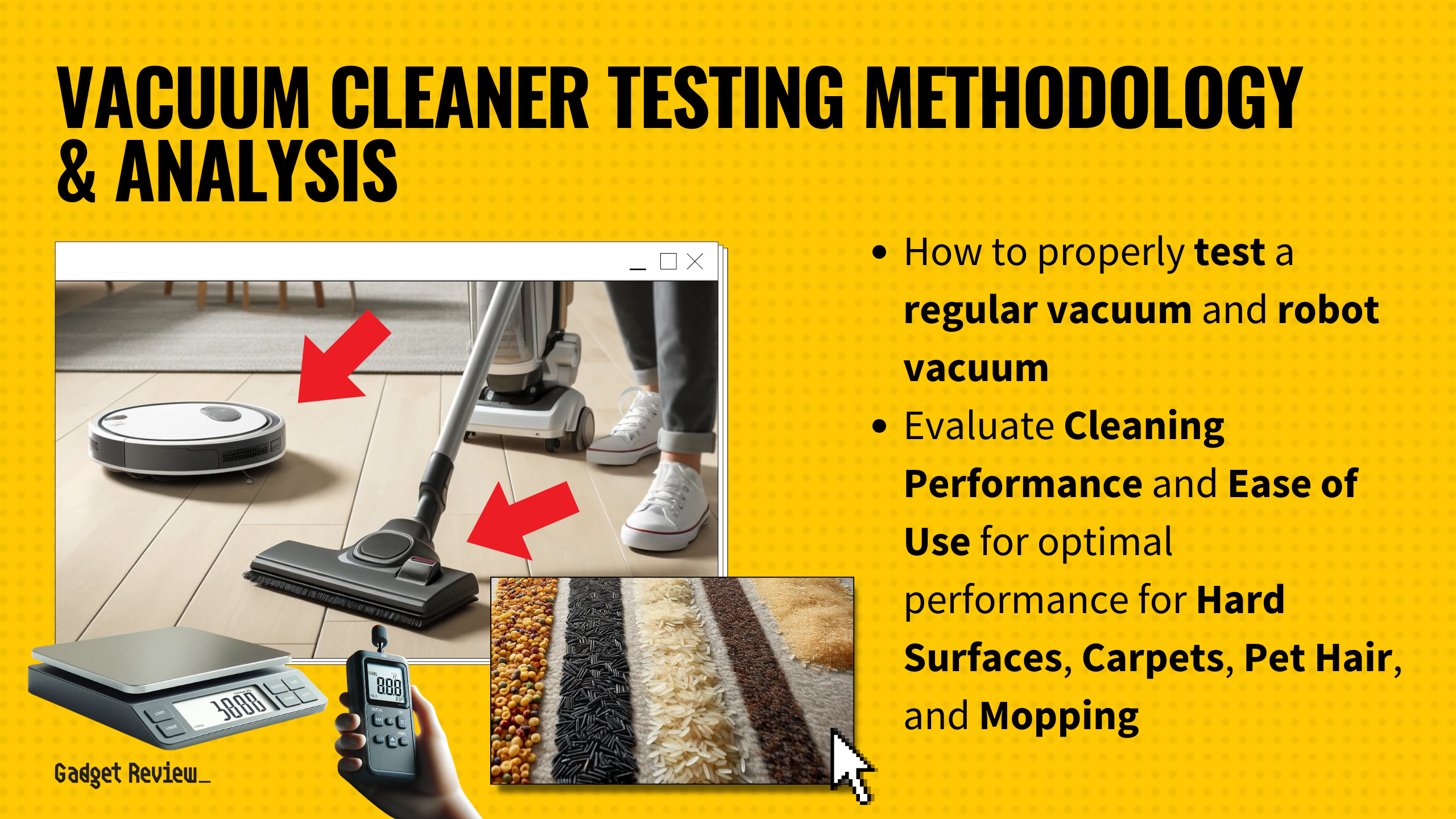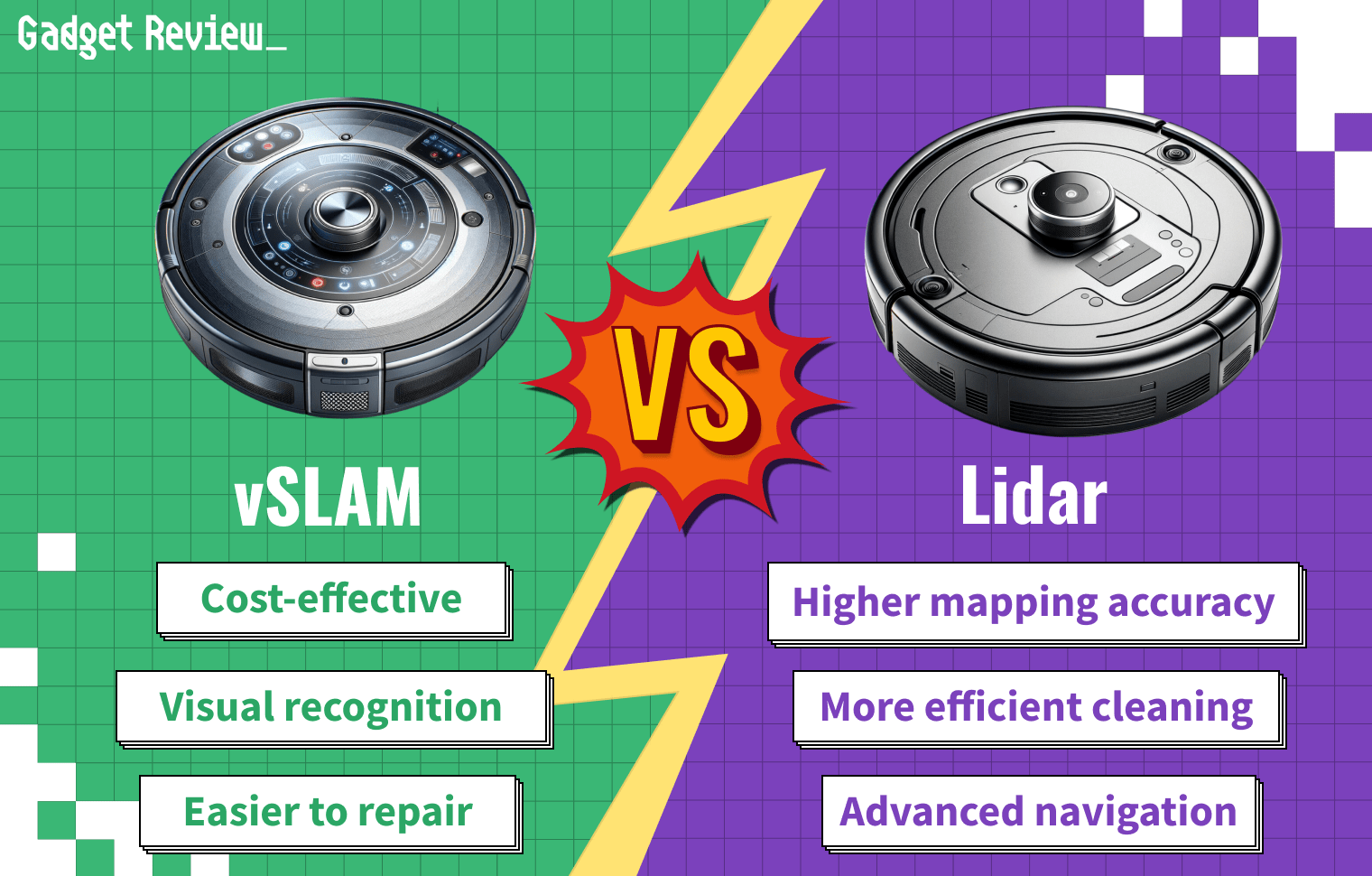If you’re looking for the quietest robot vacuums, prioritizing models with noise levels below 60 decibels is essential. These vacuums combine advanced noise reduction technology with efficient cleaning. They use features like multi-surface brush rolls and HEPA filters for various floor types while maintaining a peaceful environment. We evaluated 99 different robot vacuums and analyzed 155,700 reviews.
Only 5 vacuums earned a spot on our buying guide. Our unique approach uses our scientific True Score, verifying products as tested, to filter out fake and low-quality reviews. These winning models excelled in noise levels, cleaning efficiency, and smart integration. They performed exceptionally well in tests, demonstrating their capacity to provide a quiet and effective cleaning experience.
How Did We Rank the Quietest Robot Vacuums?
Our guide to the quietest robot vacuums stems from an exhaustive review of over 200 websites. We scrutinized testing methodologies and customer feedback to identify 2 key test results. By understanding what matters most to users—such as minimal noise and effective cleaning—we created a buying guide that reflects the top performers in this niche. Our true score system ensures that you receive the most accurate and trustworthy recommendations.
Our commitment to unbiased reviews is powered by our ‘Trust Rating’ system, targeting low quality and fake reviews. When you shop through our links, you’re backing our mission. Dive deeper to see how.
? Test Criteria
- Noise Level: The vacuum operates at a noise level of less than 72 dB when in use.
- Bare Floor Performance: The vacuum sucks up 90% of debris when cleaning bare surfaces such as tile, vinyl planks, and hardwood floors.
Latest Updates
- 06/20/2024: Published the list of quietest robot vacuum cleaners based on our Trust Rating system.
Top Quietest Robot Vacuums For 2025
Prices accurate at the time of publishing
Which Criteria Matters for Testing Quietest Robot Vacuums?
By focusing on these criteria (2 required), anyone can quickly and easily compare these vacuum cleaners and how they’ll perform. This helps you make an informed decision and purchase a vacuum cleaner that will meet your needs.
| CRITERIA | RANGE | REQUIRED | DEFINITION |
|---|---|---|---|
| Bare Floor Performance | > 90% | Yes | How much debris the vacuum sucks up when cleaning bare surfaces like tile, vinyl planks, and hardwood floors. |
| Noise Level | < 72 dB | Yes | How loud the vacuum is while running and in use. |
Our Trusted Data Sources
We looked at 120+ robot vacuum cleaner reviewers and found that 27 are trustworthy (60%+ Trust Rating). The three we have listed below are our most trusted for vacuum cleaner.
- James Morris – Kit Guru, LinkedIn
- Matt Spencer – TechGearLab, LinkedIn
- Brian Nadel – Tom’s Guide, MuckRack
Interested in a comprehensive analysis of our data sources? We’ve got you covered. Below, you’ll find a detailed list of every vacuum cleaner review website we’ve identified, organized by their respective Trust Ratings from highest to lowest. But we didn’t stop there. We’ve meticulously reviewed each publication and verified the data by checking whether the authors have bio links to MuckRack or LinkedIn. We’re committed to not only checking the facts but ensuring their veracity.
Vacuum Cleaner Test Data & Results
1. Bare Floor Performance Test Results
As the name suggests, bare floor performance references how well a vacuum does when it’s cleaning up tiles, vinyl planks, or hardwood flooring. Debris comes in a variety of sizes of course, and much of the testing revolves around picking up debris that ranges in size from cereal to bits of dirt to sand to a mix of everything above and more.
We recommend that a vacuum be able to pick up at least 90% of debris from a bare floor to ensure you end up with clean floors. Hitting a perfect score is obviously ideal, but the worse a vacuum performs here, the more work you need to do sweeping up or re-vacuuming. Missing debris is frustrating, and can invite pests if you miss bits of food, or annoyance if you step on something barefoot and hurt yourself.
Bare Floor Performance
> 90%
Acceptable range of performance
Definition: How much debris the vacuum sucks up when cleaning bare surfaces like tile, vinyl planks, and hardwood floors.
Units of Measurement: % (percentage)
Tools to Measure: Scale
Why It’s Important:
A vacuum is supposed to clean, so if it can’t pick up most of the debris on a floor, it’s not doing its job.
Bare Floor Performance in % (higher is better; 0 = No Data)
2. Noise Level (dB/dBA) Test Results
Noise Level (dB/dBA)
< 72 dB
Acceptable range of performance
Definition: How loud the vacuum is while running and in use.
Units of Measurement: dB (decibels)
Tools to Measure: Sound pressure level meter
Why It’s Important:
Vacuums make noise, and if you live in a home with skittish pets, young children or thin walls, lower volume makes vacuuming less disruptive.
Every vacuum will make noise, but some make less than others. If you have to deal with thin walls, or skittish pets and very young children, lower levels of noise are going to be more attractive. There is, however, a limit to how quiet vacuums can get, and at some point, lower noise levels are going to come at the cost of suction.
Aiming for a noise level of 72 dB or less is generally ideal, as this puts the vacuum cleaner right around the noise of a washing machine, which isn’t terribly disruptive. Lower is good if it doesn’t come at the cost of performance, and higher volume isn’t terrible if the noise won’t bother you or anyone else. For reference, 60 dB is the noise level of a typical conversation, while 80 dB is around the sound level of a lawnmower.
Noise Level (dB/dBA) (lower is better; 0 = No Data)
Quietest Robot Vacuums: Mistakes To Avoid
- Battery Life: Overlooking battery life. A quiet vacuum is great, but it needs to have sufficient battery life to clean any space effectively. Ensure the model you choose balances low noise with long-lasting battery performance.
- Suction Power: Disregarding suction power. Some quiet vacuums might compromise on suction power. Make sure the model you select provides adequate suction to clean your floors thoroughly, even if it’s quiet.
- Reviews and Ratings: Skipping reviews and ratings. Customer reviews and ratings can provide valuable insights into the vacuum’s actual noise level and performance. Don’t rely solely on manufacturer claims; check what real users have to say.
- Maintenance Needs: Forgetting maintenance needs. Consider the ease of maintenance. Quiet vacuums with complex maintenance requirements can become more of a hassle in the long run. Look for models with easy-to-clean dustbins and HEPA filters.
The Quietest Robot Vacuums Tests Compared
Product |
True Score
|
Bare Floor Performance
|
Carpet Performance
|
Pet Hair Performance
|
Noise Level
|
Battery Life
|
Column 8 |
|---|---|---|---|---|---|---|---|
| 75 |
|
|
|
|
| $149.99 $230 $80 |
75 |
|
|
|
|
| ||
| 72 |
|
|
|
|
| $199.59 |
70 |
|
|
|
|
| $319.99 | |
69 |
|
|
|
|
| $129.00 |


















































